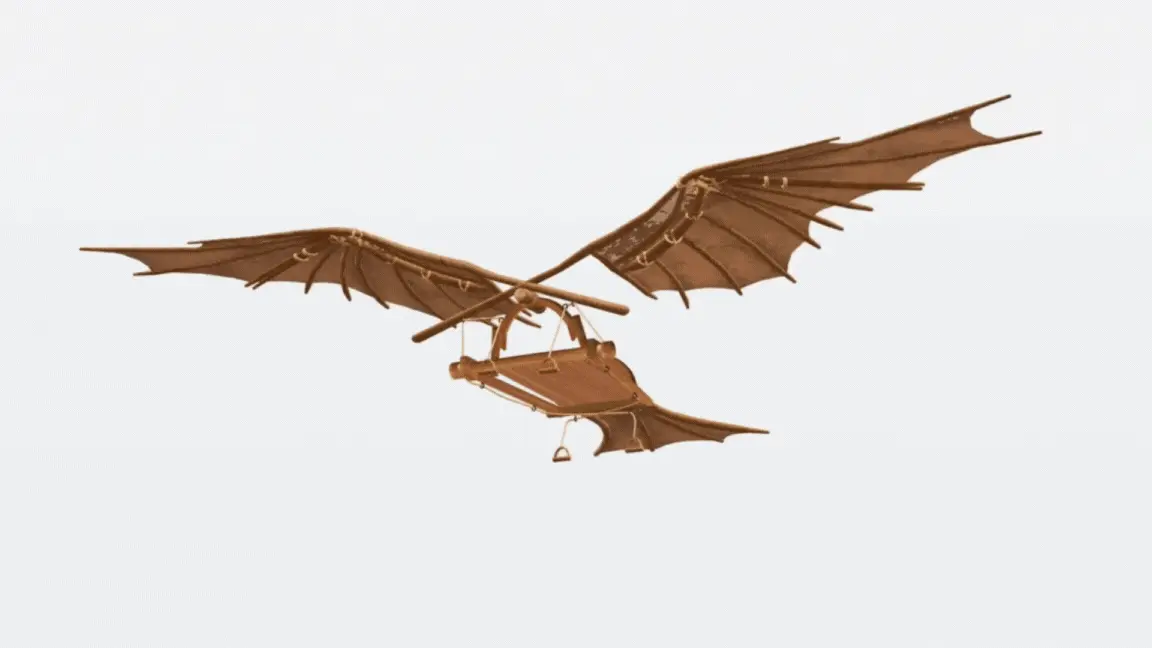Engineering
Engineers Create 'Air Conditioning' for Salmon With Chilled Patches of River Water
Wild Atlantic salmon can struggle with heat as they swim upstream to spawn—but artificial "thermal refuges" may help them cool off
The Never-Ending Race to Build the World’s Tallest Structure
From ancient Egypt to present-day Dubai, a close look at some of the buildings that held the height record
New Devices Could Change the Way We Measure Blood Pressure
Embedded in a cellphone or in accessories such as rings, bracelets or watches, the novel tools aim to make it easier to manage hypertension
Smart Toilets and Licking Rocks: Ig Nobel Prizes Celebrate Strange Scientific Achievements
Winning research projects reanimated dead spiders and examined how anchovy sexual activity influences ocean mixing
Using A.I. to Track Air Pollution From Open-Top Coal Trains
Scientists in California are working with communities—and a suite of tools—to better monitor air quality
15 Scenes of Americans at Work
These highlights from the Smithsonian Magazine Photo Contest commemorate Labor Day
See the Face of a Woman Who Died in a Shipwreck in 1628
A new facial reconstruction vividly resurrects Gertrude, one of 30 people killed during the sinking of the Swedish warship "Vasa"
New Device Can Detect Covid in the Air Within Five Minutes
Researchers report the technology is 77 to 83 percent accurate in finding any of the coronavirus variants in a room
The Architectural Genius of the Geodesic Dome and the Challenge of Putting It All Back Together
A new exhibit at the Smithsonian's National Museum of American History puts the engineering innovation back on display after decades in storage
Explore Animated Models, Digitized Sketches and More in Leonardo da Vinci's Largest-Ever Online Retrospective
The new Google Arts & Culture hub features high-resolution scans, 3D renderings and artificial intelligence experiments
Why Are Chickens So Bad at Flying? And More Questions From Our Readers
You’ve got questions. We’ve got experts
Monarch Butterflies’ Signature White Spots May Help Them Fly
These long-distance migrants could get a boost from their striking coloration, which may reduce drag by heating and cooling air unevenly
Scientists Discover Microbes That Could Revolutionize Plastic Recycling
These bacteria and fungi can break down certain plastics at cool temperatures, saving money and energy compared to some current methods
What Will It Take to Charge Electric Vehicles Faster?
To get more EVs on the road, these scientists are working to charge a car in the same time that it takes to fuel up at a gas station
See the House Engineers Built From Dirty Diapers
Using concrete and mortar made with shredded diapers could address issues like plastic waste and sand shortages, per a new study
At Long Last, Mathematicians Have Found a Shape With a Pattern That Never Repeats
Experts have searched for decades for a polygon that only makes non-repeating patterns. But no one knew it was possible until now
How 'Daylighting' Buried Waterways Is Revitalizing Cities Across America
Urban centers are exhuming creeks and streams once covered up to control floodwater—and bringing life back in the process
These Tiny Bugs Urinate by Flinging Droplets of Pee
Sharpshooters are the first example of “superpropulsion” in a living organism, according to new research
Can Green Hydrogen Help Power Latin America?
In anticipation of future demand, several projects are underway in the region to produce this clean energy source
Genetically Modified Trees Are Taking Root to Capture Carbon
A start-up created the plants to help combat the climate crisis, but they have so far only been tested in a lab setting
Page 1 of 20
:focal(1031x732:1032x733)/https://tf-cmsv2-smithsonianmag-media.s3.amazonaws.com/filer_public/4a/41/4a41a0e2-f577-48ea-a110-1e8923ef275f/gettyimages-1374937713.jpg)
:focal(800x602:801x603)/https://tf-cmsv2-smithsonianmag-media.s3.amazonaws.com/filer_public/0f/5a/0f5ae719-49eb-47f2-9e45-177c646b5994/tallestbuildings.jpg)

:focal(906x815:907x816)/https://tf-cmsv2-smithsonianmag-media.s3.amazonaws.com/filer_public/fb/ca/fbca06ee-ad6c-423b-84f0-7d8612da418b/gettyimages-596940494.jpg)
:focal(1061x707:1062x708)/https://tf-cmsv2-smithsonianmag-media.s3.amazonaws.com/filer_public/3e/ce/3ece345d-2192-482b-9da4-c2046b238d08/gettyimages-155431788.jpg)
:focal(2016x1517:2017x1518)/https://tf-cmsv2-smithsonianmag-media.s3.amazonaws.com/filer_public/9d/77/9d77fcbe-4fa7-43d2-9755-2606b83c9ab4/1__-_50683783-6c5c-43ad-a8bb-13605dc16015.jpg)
:focal(700x527:701x528)/https://tf-cmsv2-smithsonianmag-media.s3.amazonaws.com/filer_public/f1/4c/f14ca894-b1c7-40a0-9b6d-539d941f3d3e/lead_image_vasa_victim.jpg)
:focal(380x271:381x272)/https://tf-cmsv2-smithsonianmag-media.s3.amazonaws.com/filer_public/8c/dc/8cdc0ce6-78da-48bb-a667-60aa74fffb01/img_0827_team_h.jpg)
:focal(1024x770:1025x771)/https://tf-cmsv2-smithsonianmag-media.s3.amazonaws.com/filer_public/3c/53/3c532b05-727b-4fbe-8dd6-fa3fa2adf07d/weatherbreak_structure_nmah.jpeg)

:focal(672x499:673x500)/https://tf-cmsv2-smithsonianmag-media.s3.amazonaws.com/filer_public/ff/73/ff735e46-cacd-48f6-9350-1f72df7b71c3/q_illo.jpg)
:focal(2784x1856:2785x1857)/https://tf-cmsv2-smithsonianmag-media.s3.amazonaws.com/filer_public/13/35/13351956-ed1f-4bec-bda4-005848510455/gettyimages-1246834543.jpg)
:focal(3360x2240:3361x2241)/https://tf-cmsv2-smithsonianmag-media.s3.amazonaws.com/filer_public/17/89/1789c120-8384-484a-b365-4ac257bee078/gettyimages-1223473775.jpg)
:focal(1061x707:1062x708)/https://tf-cmsv2-smithsonianmag-media.s3.amazonaws.com/filer_public/46/f3/46f32771-ddd3-46f2-b900-597a9d492921/gettyimages-1129803234.jpg)
:focal(800x602:801x603)/https://tf-cmsv2-smithsonianmag-media.s3.amazonaws.com/filer_public/38/18/381841f9-5eb3-4121-a461-63c5a436cc05/image_2.jpeg)
:focal(600x383:601x384)/https://tf-cmsv2-smithsonianmag-media.s3.amazonaws.com/filer_public/50/3e/503ef183-02d3-4547-ab4c-261ab1c02012/patch647.png)
:focal(1000x648:1001x649)/https://tf-cmsv2-smithsonianmag-media.s3.amazonaws.com/filer_public/db/13/db131c1a-fada-4283-90e3-cb6d33aa4c30/bridge.jpg)

:focal(800x301:801x302)/https://tf-cmsv2-smithsonianmag-media.s3.amazonaws.com/filer_public/2c/04/2c040cdf-fad8-46d4-a1ef-839362d6a741/green-hydrogen-1600x600.jpg)
:focal(400x267:401x268)/https://tf-cmsv2-smithsonianmag-media.s3.amazonaws.com/filer_public/17/21/1721f45a-5981-4324-bee8-82d97f80327f/sei_142266184.jpg)